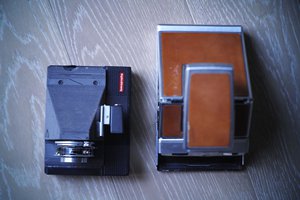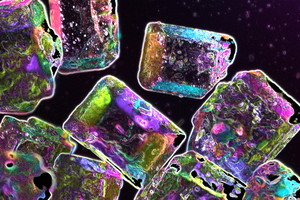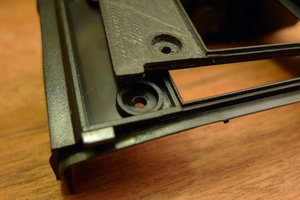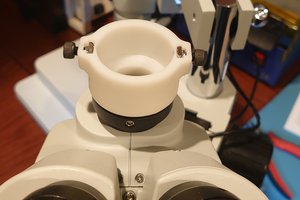Bringing old Lubitel cameras back to life
To make the experience fit your profile, pick a username and tell us what interests you.
We found and based on your interests.
viewing lens 25x10.zipA viewing lens rim with the rated backlash value of the outer screw thread 0.25 mm and the rated tightness of inner screw thread 0.10 mm.Zip Archive - 1.24 MB - 08/26/2021 at 05:43 |
|
|
viewing lens 10x10.zipA viewing lens rim with the rated backlash value of the outer screw thread 0.10 mm and the rated tightness of inner screw thread 0.10 mm.Zip Archive - 1.26 MB - 08/26/2021 at 05:43 |
|
|
viewing lens 30x10.zipA viewing lens rim with the rated backlash value of the outer screw thread 0.30 mm and the rated tightness of inner screw thread 0.10 mm.Zip Archive - 1.30 MB - 08/26/2021 at 05:43 |
|
|
viewing lens 22x10.zipA viewing lens rim with the rated backlash value of the outer screw thread 0.22 mm and the rated tightness of inner screw thread 0.10 mm.Zip Archive - 1.24 MB - 08/26/2021 at 05:43 |
|
|
viewing lens 15x10.zipA viewing lens rim with the rated backlash value of the outer screw thread 0.15 mm and the rated tightness of inner screw thread 0.10 mm.Zip Archive - 1.25 MB - 08/26/2021 at 05:43 |
|
Each Lubitel camera has its own charm! For this project it translates to the need of matching a lens rim to the camera body. From my experience, it can be done just by measuring the body (the diameter of the inner screw thread). Essentially, you need to print and match until the proper rim size is found. To simplify the process, I prepared a set of STL files with rims of different sizes. The files are named according to the following convention:
The lens rim 3D model is designed for the following printing settings:
Please, before printing, pay special attention to first layer calibration. "Elephant foot" would ruin the printed lens rim for sure because the rim's teeth would not mesh properly with a Lubitel's lens rim.
Since the project is about making a functional part for a Lubitel camera, a rather precise device, and a 3D printer is the final step of manufacture, the printer should be capable of delivering enough precision.
I developed the 3D model without any special requirements for the printer in mind. Also, taking into account the choice of filament, which has no issue with adhesion, I assume that any conventional 3D printer should work. Direct drive extruders are preferred though - I chose Prusa.
In this project, PLA filament was good enough for the proof-of-concept prints. Once I was confident in the overall approach, I switched to PETG which is heat- and oil-resistant. Oil resistance is important because the camera lens screw thread should be lubricated with grease.
As in my other Lubitel project, I chose recycled filament: r-PLA and r-PETG by EKO MB. And I'm more than satisfied with the results!
Once I identified the reason for the enormous backlash and came up with a method that would resolve the issue, I reverse engineered the design of the original lens rim. Then I created a 3D model with OpenSCAD and printed the first PoC. This first prototype of the replacement lens rim showed that a conventional 3D printer (0.45 mm nozzle, 0.20 mm layer) gives the level of precision comparable to the original aluminum rim.
Inspired with the first results, I started adjusting the 3D model. It took me more than twenty intermediate prints to finalise the design. Here are the main improvements: a longer screw thread compared to aluminum rims; chamfers interspersed here and there to increase strength; a printing-friendly approach (less plastic, faster printing).
While printing replacement rims and attaching them to each of the available Lubitel cameras, I learned that each camera requires a specific replacement rim that matches the camera. Moreover, the 3D printer and filament being used do affect matching. For that reason, I generated five slightly different STL files. I labeled each file with two numbers. The first one denotes the rated backlash value of the outer screw thread: 0.10 mm, 0.15 mm, 0.20 mm, 0.25 mm, 0.30 mm. The second number denotes the rated tightness of inner screw thread (the thread for the lens itself). It seems, that 0.10 tightness works well in most cases (though this is not the case with the outer thread). My recommendation is to start with the 0.20 mm STL file to see how the printed replacement rim fits into the camera body. If it is too tight, then try the 0.25 mm STL. If it is too loose, then try the 0.15 mm STL. If after the first iteration the rim doesn't fit well, go to the 0.30 mm STL and 0.10 mm respectively.
As I mentioned earlier, there is an issue with most of the Lubitel cameras that I handled. According to my own experience, all of the models (i.e., Lubitel, Lubitel-2, Lubitel-166) are affected. The issue lies in the viewing lens (the top one) and manifests itself in enormous backlash of the screw thread. Basically, the lens jumps back and forth and from side to side instead of smooth turning and sliding. This makes focusing practically useless –you never know on what point you've actually focused the camera.
Having observed this problem consistently with cameras of different ages and conditions, I concluded that the reason is not in the design of camera, nor is it due to abusive handling. I stuck with my little "investigation" until I noticed one significant detail: the top lens has a rim made of aluminum, which turns in a brass nut molded into the Bakelite of the camera body. As far as I know, brass is a very stable material and doesn't change properties over time. Aluminum, by contrast, is affected by ageing. Without alloying additives or applying special treatments, things made of aluminum shrink over time. Taking into account that most existing Lubitel cameras were made during the Soviet Era, they are pretty old now and have had enough time for this kind of metal degradation to develop. How much can they shrink over time? I don't know exactly, but my later experiments showed that 0.05 mm reduction in the outer diameter of the lens screw thread is enough to create enormous backlash.
How to solve the issue? I know for sure that aluminum products can be stretched a bit, but the procedure requires industrial equipment. I decided to leverage 3D printing, and I set a goal of developing a replacement lens rim that can be printed with a conventional printer.
While I was working on L2Camera — a project related to Lubitel cameras — I learned the following three things.
Firstly, these cameras are simple and therefore reliable, repairable, maintainable, and they are equipped with decent glass lenses.
Secondly, they are available in abundance - several million of these cameras are spread around the world, mostly in Eastern Europe. My experience shows that you can find a good used Lubitel camera for $10. Compared to the newly produced Lubitel 166+ model sold by the Lomography society for almost $400, ten dollars is nothing. I have had no hands-on experience with the 166+ model, but I believe it is nearly identical to its ancestors.
Thirdly, out of perhaps a dozen that I went through my hands, only one Lubitel camera was capable of producing good photos. Maintenance procedures like cleaning, oiling, and lens aligning didn't help. It took me rather a long time to figure out the reason and come up with a solution.
For those who want to have a fully functional Lubitel camera, this project describes the inherent problems with Lubitel cameras, and offers some practical solutions.
I will describe the technical issues in more detail, and then move on to share my solutions.
Create an account to leave a comment. Already have an account? Log In.
Become a member to follow this project and never miss any updates

 PengxiangXu
PengxiangXu
 E/S Pronk
E/S Pronk
 theschlem
theschlem